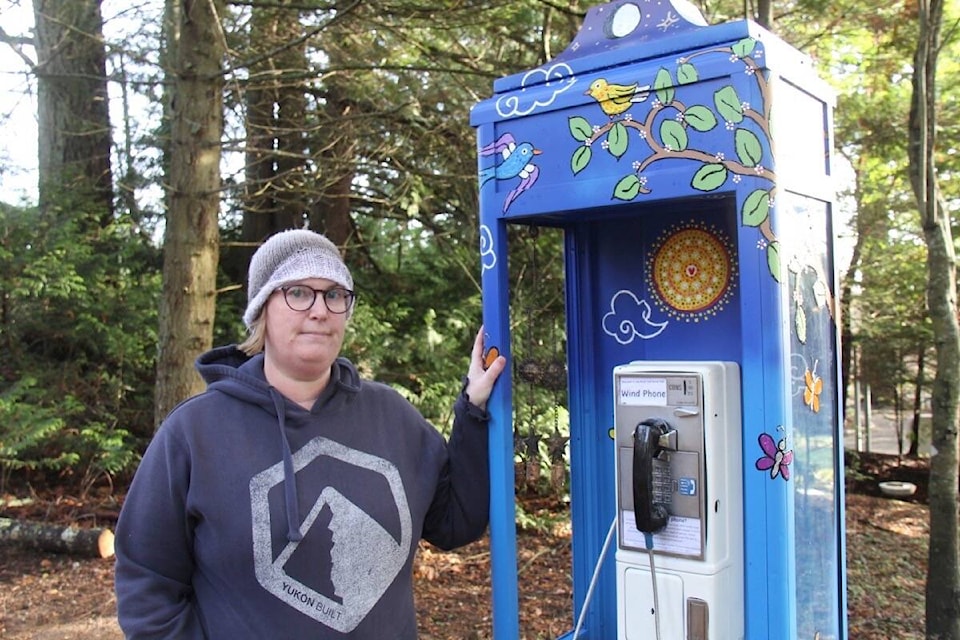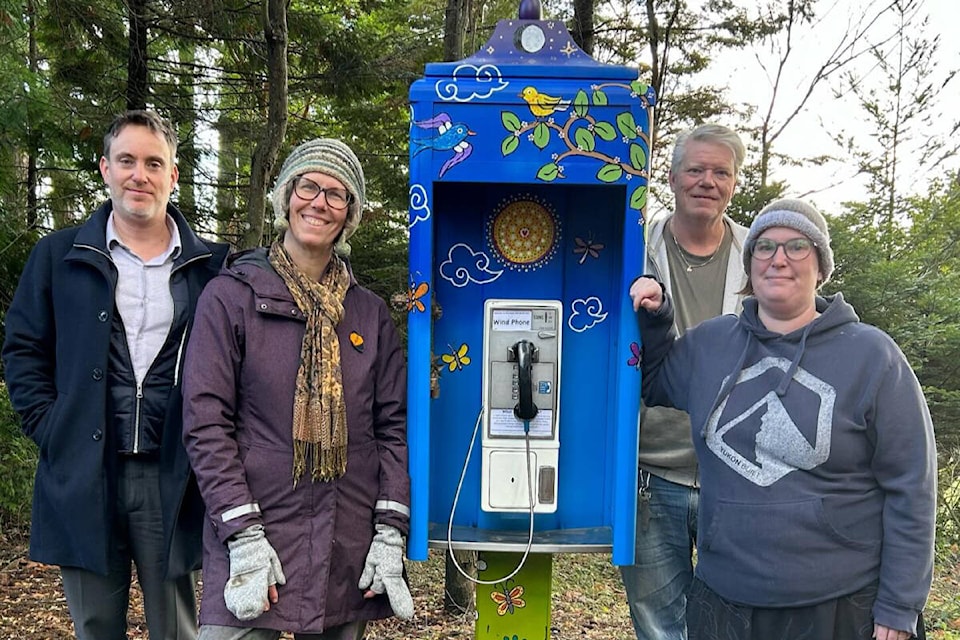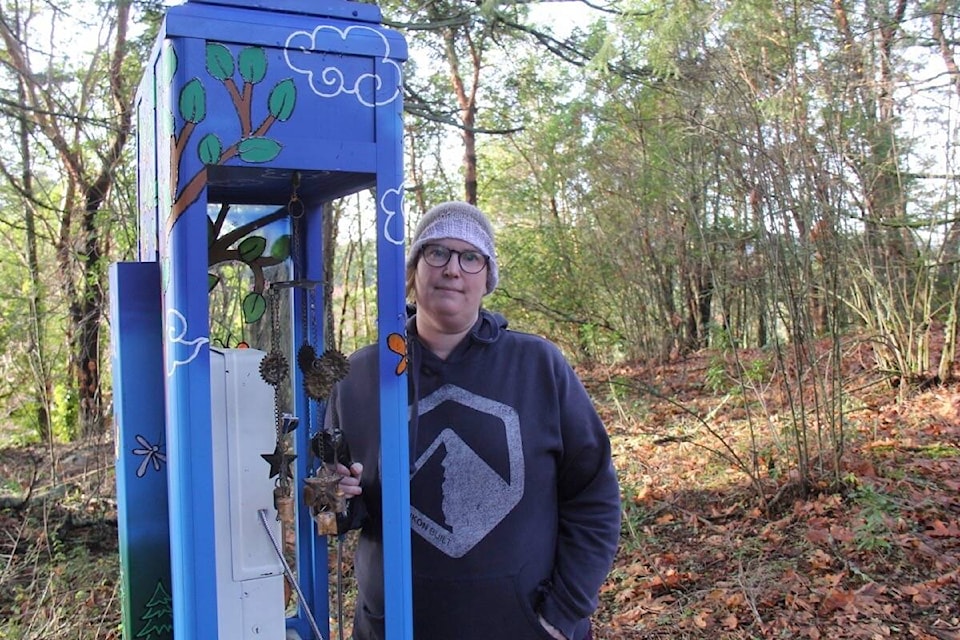A pay phone planted in the side of a hill in Greater Victoria‚Äôs Royal Oak Burial Park offers a ‚Äúprofound‚ÄĚ new way to grieve.
The path there is a long one, uphill past the landmark Art Deco building that cost the cemetery board $16,000 to build in the 1930s.
Adorned in painted flowers, birds, greenery and a sweet little dog courtesy of local artist Beth Threlfall, the phone is the newest form of remembrance in the 100-year-old park that is always evolving ways to help people grieve.
The ‚Äúwind phone‚ÄĚ was created by Japanese architect Itaru Sasaki in 2010 to cope with his cousin‚Äôs death. The disconnected phone afforded a way to reconnect with the lost loved one by making a ‚Äúcall.‚ÄĚ Put up on his private land, it opened to the public in the following year after a devastating earthquake and tsunami killed more than 15,000 people.
The revelation of a new way to grieve spurred an international movement.
The Royal Oak wind phone is tucked beside the Little Spirits Garden ‚Äď a 2010 addition to support families who experience pregnancy or infant loss ‚Äď and overlooks much of the park.
The location was crucial to Amanda Farrell-Low who embarked on ‚Äúquite the journey‚ÄĚ of installing a wind phone two years ago. That‚Äôs when she approacched Royal Oak executive director Ilan Highton, who approached his board and all agreed it aligned with their commitment to serve the community in meaningful ways.
‚ÄúThe ‚Äėphone of the wind‚Äô represents a unique blend of tradition and innovation, offering comfort in the time-honoured setting of a cemetery while introducing a creative approach to mourning and remembrance. We are pleased to see this project come together and look forward to it being a thoughtful and comforting resource for our community,‚ÄĚ Highton said.
Together the pair searched high and low for the right site.
‚ÄúThis one just seemed perfect because it‚Äôs a little bit hidden away‚Ķ you kind of have to discover it a bit. You have a bit of privacy,‚ÄĚ Farrell-Low said.
READ ALSO:
She learned about the phones from a newspaper article about a Lower Mainland wind phone dedicated in memory of someone lost to overdose and thought it sounded like something Greater Victoria could use. A researcher by nature, she set out to learn more about the wind phone.
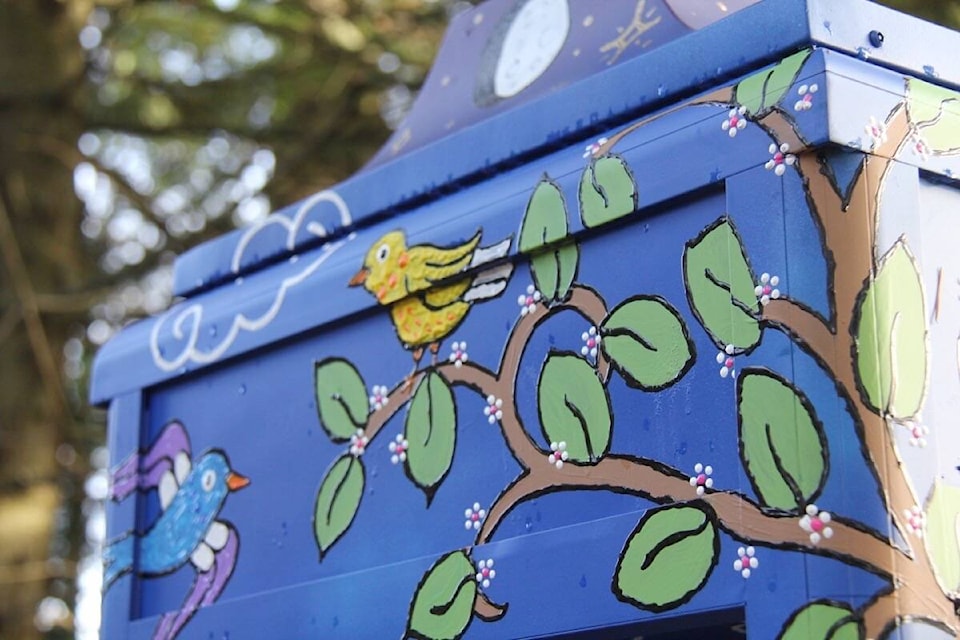
‚ÄúThese things started spreading around Japan as a way for people to connect with folks they‚Äôd lost and now they‚Äôre all over the world,‚ÄĚ Farrell-Low said.
For her, the idea held personal value. She lost her younger brother Liam to overdose in 2012 and he‚Äôs actually buried in Royal Oak Burial Park ‚Äď just one reason the location seemed ideal.
‚ÄúSometimes when I come to see him it feels kind of weird going up to this grave in the middle of this field and trying to think about the person or connect with them. The wind phone just seemed like a really cool way to have an excuse to pick up the phone, dial a number and talk to somebody. It can feel like a really profound way to connect with someone,‚ÄĚ she said.
READ ALSO:
As the wind phone movement grows, so do the designs, but she had a pay phone in mind ‚Äď not easy to find.
‚ÄúI really thought a pay phone would be great. So I started looking for one and, of course, there aren‚Äôt a lot anymore right, they‚Äôre all kind of gone. I reached a few dead ends.‚ÄĚ
Again someone sent her a newspaper story about pay phones with an email that eventually led to Doug Ferguson ‚Äď the guy tasked with decommissioning them across Vancouver Island. Before that he was the guy who kept them operational. He had the perfect ‚Äúheritage booth‚ÄĚ and donated it to the cause.
‚ÄúHe‚Äôs been really amazing and a really cool person to get to know,‚ÄĚ Farrell-Low said.
Ferguson cleaned up the booth, made sure all the parts were there and helped install it on the Saanich hillside.
Phone found, Farrell-Low reached out to Victoria artist Threlfall, the woman who inspired pole art in Fernwood, then beyond.
READ ALSO:
‚ÄúShe does a lot of community-based work and work that re-purposes old material so she was a natural partner for this,‚ÄĚ Farrell-Low said.
There are purple flowers for overdose awareness, a little dog to represent Liam‚Äôs dog, and lupins ‚Äď common in the Yukon where Farrell-Low and her brother grew up. A wind chime hangs on one open side.
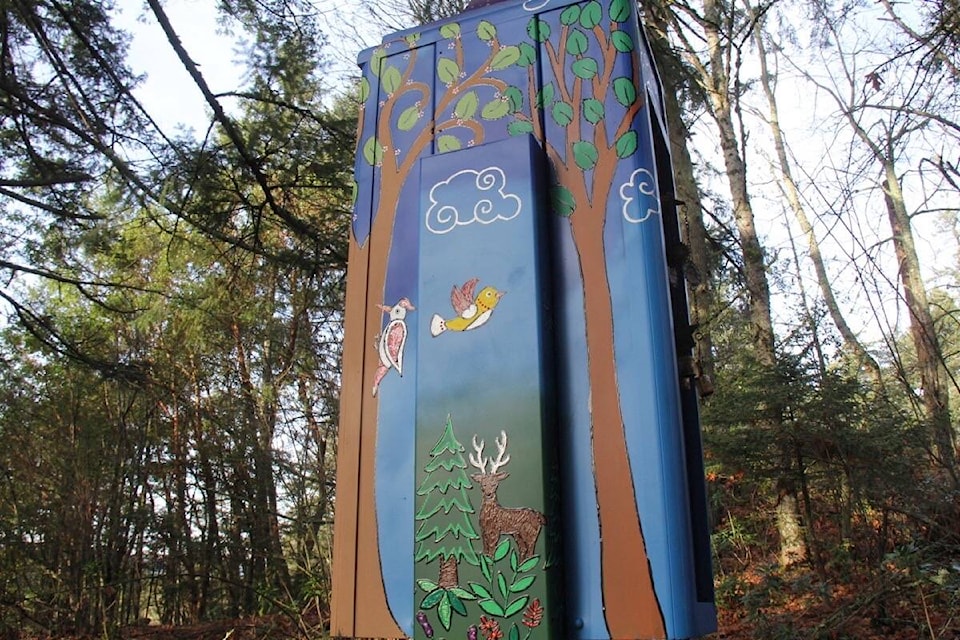
A bench and a phone book are in the works, as is the path to the wooded site.
‚ÄúIt‚Äôs a simple idea but it‚Äôs really powerful,‚ÄĚ Farrell-Low said.
She’s done a little test phone call but is waiting for a quiet moment, perhaps the anniversary of Liam’s death on Jan. 26 for a dedicated chat to him.
